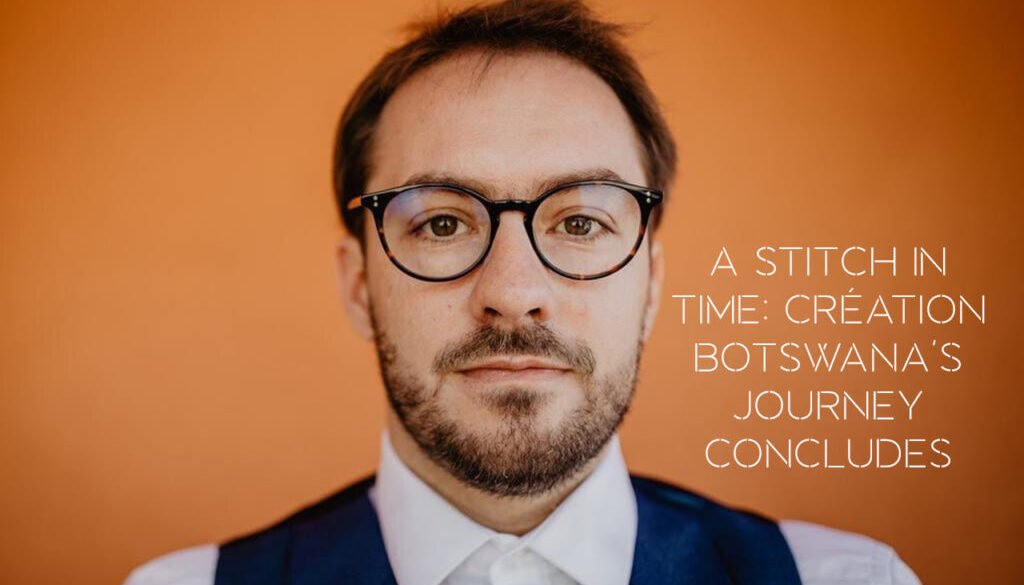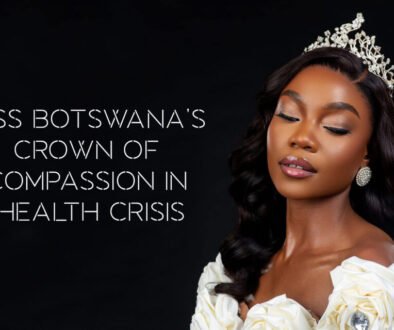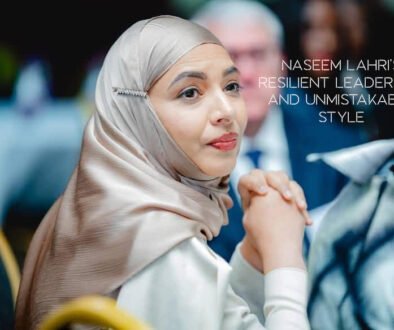A Stitch in Time
A groundbreaking program designed to boost Botswana’s fashion industry has concluded. The initiative was a collaboration between Création Botswana, Alliance Française, and the French Embassy.
This month, our team features Yoann Talhouare, the technical advisor at the National Arts Council of Botswana.
As an expert in cultural policy and creative sector development, Talhouare brought his strategic expertise to the Création Botswana project. His career has taken him across Africa, Canada, and Europe, where he has coordinated high-impact cultural programs for French Embassies in Nigeria and Burundi, as well as global institutions like Canal France International and the French Agency for Development.
We caught up with him to discuss the program’s journey, future plans, and key takeaways.

LTM: Looking back at the inaugural Création Botswana program, what do you consider to be its most significant achievement?
Yoann: One of the most meaningful achievements has been the creation of a genuine community among the participants — not just a network of professionals, but a group of individuals who have formed lasting relationships that will continue to grow well beyond the life of the program. Watching designers and international experts, support one another, and celebrate each other’s progress has been incredibly powerful.
Another key milestone was securing the support of private sponsors such as Lucara Botswana Diamond and Absa Bank Botswana. From the outset, we believed it was essential to build strong ties with the private sector, not only for financial sustainability, but also to reinforce the idea that fashion and the creative industries are valuable, investable pillars of economic and cultural development. Their involvement gave the project greater visibility and legitimacy, and we hope it sets a precedent for future public-private partnerships in the creative space.
LTM: What was the biggest challenge you and your team faced, and how did you overcome it?
Yoann: One of the main challenges was establishing a strong institutional anchor for the program. While we had productive engagements with several stakeholders, it takes time to build trust and ensure that public authorities would see the project as something they could truly take ownership of. We know from the beginning that for Création Botswana to have a long-term impact, it needs to be embraced locally. We engaged in extensive outreach to public authorities — ministries, cultural agencies, and other institutional stakeholders – It was a necessary effort, which we hope will pave the way for sustained engagement and institutional support.
Another significant challenge was the lack of reliable data on the fashion industry in Botswana. Without a clear picture of the ecosystem — its strengths, gaps, and opportunities — it was difficult to design an effective program. That’s why we started with a baseline study to better understand the sector, identify key players, and tailor our approach to the local context. That research became a crucial foundation for everything that followed.
LTM: The program’s dual-cohort model for emerging and established designers was a unique approach. Can you elaborate on the philosophy behind this structure and its impact?
Yoann: The dual-cohort model was rooted in the belief that growth is not linear, and that valuable learning takes place when different levels of experience are brought into conversation. By bringing together emerging designers and more established creatives, we created an environment where designers could learn from each other, exchange ideas, and even initiate professional collaborations.

LTM: How did this approach foster a sense of community and mentorship, and what role did it play in achieving the program’s goals?
Yoann: While there was no formal mentorship role, the structure naturally encouraged peer learning and mutual inspiration. It allowed established designers to revisit their own journeys and engage with a new generation of talent, while emerging designers benefited from proximity to professionals who had already carved a path in the industry.
This approach helped to build a strong sense of solidarity and community — a central goal of Création Botswana — and contributed to fostering a more connected, collaborative fashion ecosystem in the country.
LTM: From your perspective, how has the program impacted the fashion industry in Botswana beyond the immediate beneficiaries?
Yoann: The impact goes beyond the participants themselves. Création Botswana has helped to spark broader conversations around fashion as a viable economic and cultural sector in Botswana. It has brought visibility to the local industry, inspired younger creatives, and encouraged new forms of collaboration — between designers, photographers, stylists, artisans, and even policymakers.
We’ve also seen institutions and private sector actors take a renewed interest in supporting creative industries, which is key for long-term structural change. In that sense, the program has helped shift perceptions — from fashion as a hobby, to fashion as business, culture, and identity.
LTM: As you return to France, what are your aspirations for the long-term sustainability of Création Botswana?
Yoann: My aspiration is that Création Botswana becomes a fully locally-owned initiative — one that continues to evolve with the needs of the creative sector in Botswana.
LTM: What mechanisms are being put in place to ensure the program’s legacy and continued success without your direct involvement?
Yoann: To ensure Création Botswana’s legacy and continued success, we are focusing on strengthening public-private partnerships to secure both institutional backing and financial sustainability. Engaging government authorities remains a priority, as their support is essential for embedding the program within the country’s broader cultural and economic strategy.
We are also working to promote the beneficiaries’ projects by facilitating their access to media platforms and public visibility — an important step to help them build audiences and attract new opportunities.
Finally, the Alliance Française — which played a crucial role throughout the program — is being positioned as a long-term anchor for Création Botswana. The goal is for it to remain a welcoming space for designers: a place where they can host pop-ups, organize community events, and continue to meet, collaborate, and grow.
LTM: For future editions of the program, what are some key changes or additions you would like to see implemented?
Yoann: The ambition is to move from a pilot phase to a long-term, nationally anchored platform that supports multiple creative disciplines. That could include regional editions, a permanent creative hub, or even an incubator model. But to make this vision a reality, we need strong ownership and support from both public authorities and the private sector. We hope that government institutions will adopt and sustain the programme as part of their national strategy for the creative economy, while private partners – like Absa and Lucara Botswana, who have generously supported this edition – continue to invest in creative talent.
LTM: What advice would you offer to the next generation of Batswana fashion entrepreneurs?
Yoann: Build a strong network — no one succeeds alone. Surround yourself with people who challenge and support you, and don’t hesitate to lean on your peers, especially during difficult moments. The creative journey has its ups and downs, and community is one of your most valuable resources.
At the same time, stay true to your identity. Don’t try to copy what others are doing — develop a clear, authentic vision for your brand, and make sure it’s rooted in something that feels personal and meaningful to you. And finally, take the business side seriously. Do your homework: market research, pricing strategy, brand positioning — all of it matters. Talent is essential, but structure and strategy are what will sustain your growth in the long run.



